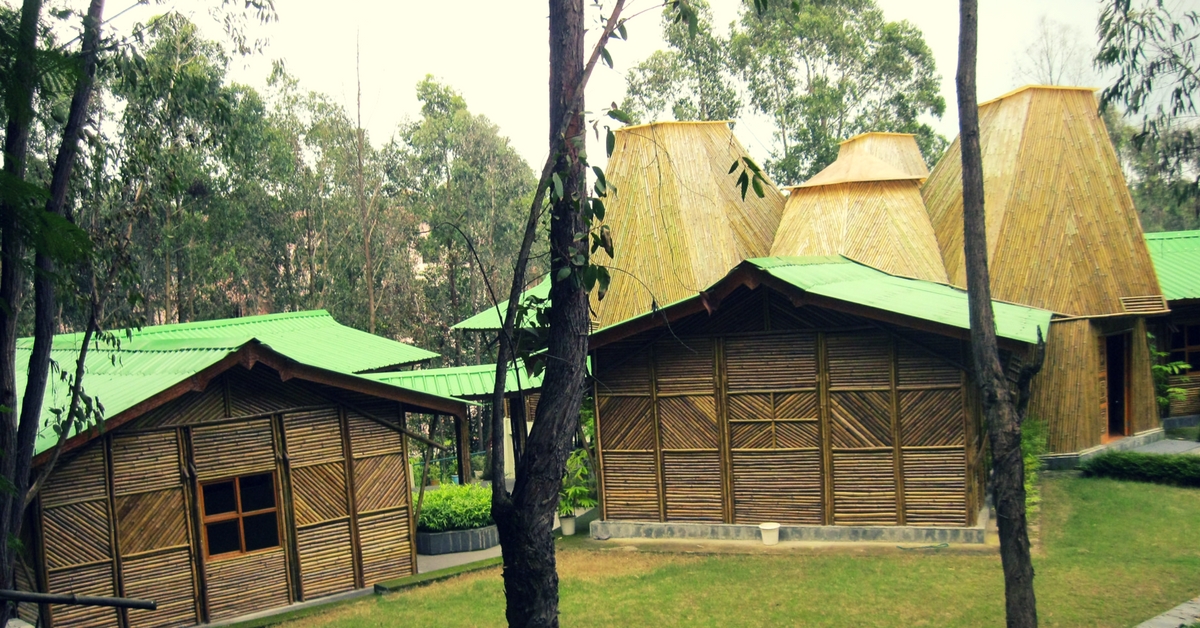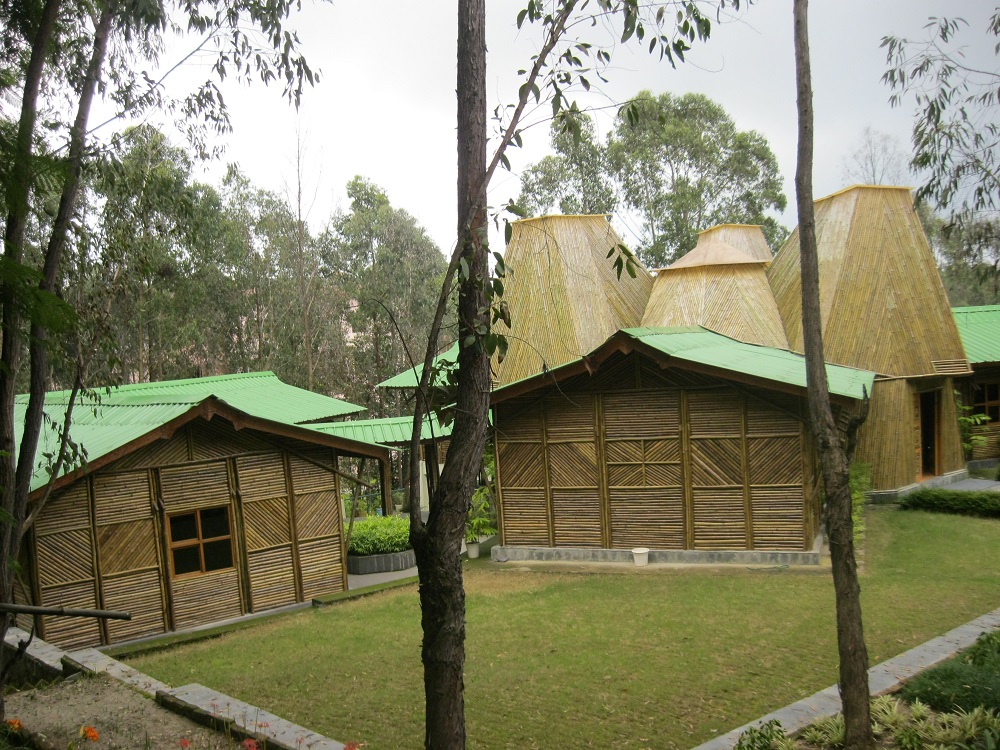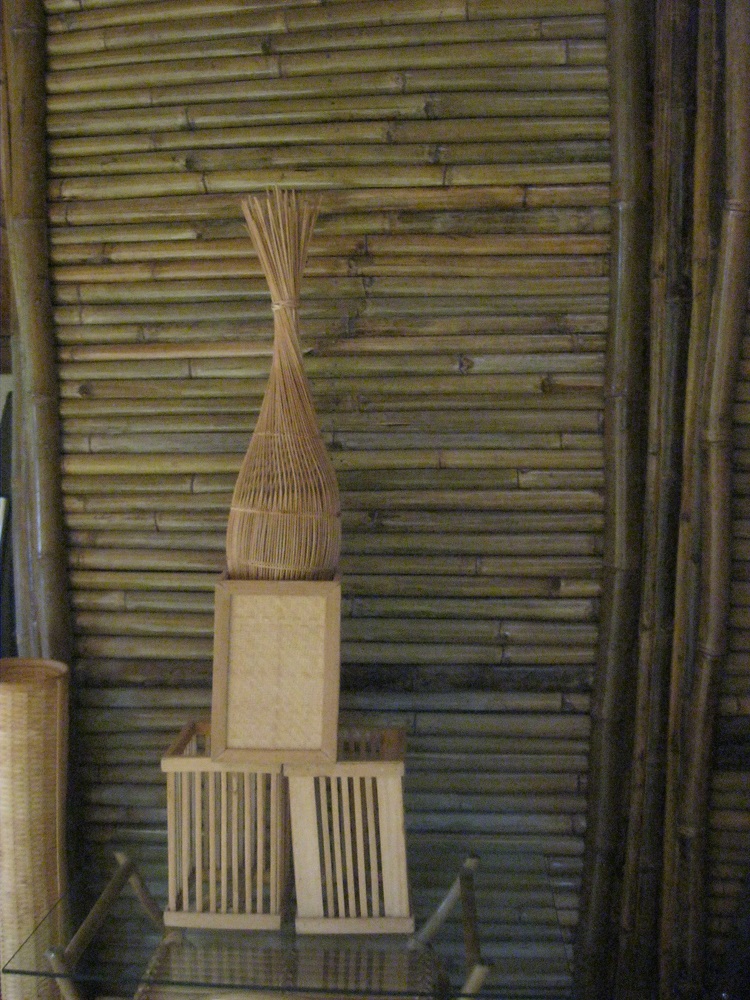The Bamboo Museum in Palampur Opens Our Eyes to the Amazing Potential of This Wonder Grass
For centuries now, people have been using bamboo for almost everything, from food to construction.

When Thomas Alva Edison invented the light bulb, he used a carbonized bamboo filament in one of the bulbs he made. If this little piece of information about bamboo is not interesting enough, it may come as news to most of us that bamboo was the only plant that survived the nuclear radiation caused by the atomic blasts in Hiroshima in 1945.
Bamboo is a tribe of flowering perennial evergreen plants belonging to the grass family. It is one of the most versatile grasses found on Earth. This amazing grass, which grows very fast and in clumps, can be grown anywhere. Bamboo grows naturally in the Northeastern and Southern parts of India, where the geographical conditions have always been suitable for it to grow in abundance.
For centuries now, the local people have been using bamboo for almost everything from food to construction. The best place to learn more about this ‘woody grass’ is at India’s one and only Bamboo Museum, found in the premises of the Institute of Himalayan Bio-resource Technology, one of the many research laboratories of the Council of Scientific and Industrial Research of India, based in Palampur, in Himachal Pradesh.
The bamboo museum has been built using various species of this woody grass.

The Bamboo Museum built using various species of bamboo
The walls, the floor, the ceiling, the entire exterior, the doors and even the furniture inside are made using bamboo alone. Numerous handicrafts made out of bamboo are displayed in the museum. Seeds of bamboo as well as sweetmeats and pickles made out of bamboo are available for visitors to see and taste. To add to the beauty of the structure, along the exterior walls, varieties of bamboo are planted in pots.
“The Bamboo Museum was first open to public on the September 30, 2011. The residents of Palampur and many tourists get to visit this interesting place and learn about this ‘super’ grass. The museum was the brain child of Dr Anil Sood and a few of his scientist colleagues, who have done decades of research on this plant family,” says Dr Sanjay Kumar, Director of CSIR-IHBT.
The aim behind establishing a museum like this is to educate all the visitors on how just one family of grass, with over a thousand species, can take care of all our requirements.

Bamboo furniture in the museum and seeds and eatables on display in the showcases

Bamboo panels for the walls of the museum with lots of bamboo artifacts on display
There are about 125 species of this perennial evergreen plant found in India and around 50 of them are grown in the institute at Palampur. Bamboo comes in various colors, sizes and girth, is stronger than steel, earthquake-proof and an extremely effective erosion control agent. There is a strong and thorny variety of bamboo that can be grown along the international borders of the country, making a natural fence that is sturdy and very difficult to get across.
“Bamboo can be used as a wood substitute for construction work as well as for making strong and sturdy furniture. Bamboo as activated charcoal can be used in water filtration plants and in wineries. We can make paper, handicraft items, weapons and musical instruments from bamboo,” continues Dr. Sanjay.
Bamboo shoots and other tender parts of the grass are used to make pickles and other food items. Bamboo candy, as discovered in this laboratory, is rich in vitamins, proteins and fiber and is said to have the capacity to reduce cholesterol if consumed regularly. The food and nutrition department at the institute has been working on introducing into the market bamboo noodles, bamboo nuggets and many other snacks made of bamboo.
All these qualities of the various species of bamboo are showcased at the Bamboo Museum at Palampur.

Different species of bamboo in pots add to the external beauty of the museum
After reading all the information provided at the museum about the ‘Green Gold of the Forest,’ one realizes that bamboo is one of those grasses that will alleviate the problem of food, clothing and housing in the entire country. Bamboo can be grown anywhere and since it grows very fast, it can be harvested and put to use within four years of it being planted.
“There is no requirement to destroy bamboo forests for industrial requirements. All that is required to be done is to grow this grass on barren land, which will help create afforestation and reduce soil erosion. In a clump, the older shoots are found on the inside, while the younger shoots are found on the periphery. If the shoots are cut systematically for human and animal consumption, the clump will never be lost”, adds the director of IHBT
The IHBT laboratory specializes in plants found in the Himalayas and though Bamboo is not a natural grass found in these mountains, the scientists here promote the research on this plant family and are doing their best to spread information about this grass tribe. These scientists hope that the government and the citizens of this country will understand the importance of growing bamboo extensively and making the best use of it.
Like this story? Or have something to share? Write to us: [email protected], or connect with us on Facebook and Twitter (@thebetterindia).
Aparna Menon is a freelance writer, writing for various newspapers for the past 10 years. Her main fields of interest are wildlife, heritage and history. A keen traveller, she loves to read and write and does a lot of art work too.
If you found our stories insightful, informative, or even just enjoyable, we invite you to consider making a voluntary payment to support the work we do at The Better India. Your contribution helps us continue producing quality content that educates, inspires, and drives positive change.
Choose one of the payment options below for your contribution-
By paying for the stories you value, you directly contribute to sustaining our efforts focused on making a difference in the world. Together, let’s ensure that impactful stories continue to be told and shared, enriching lives and communities alike.
Thank you for your support. Here are some frequently asked questions you might find helpful to know why you are contributing?


This story made me
-
97
-
121
-
89
-
167











